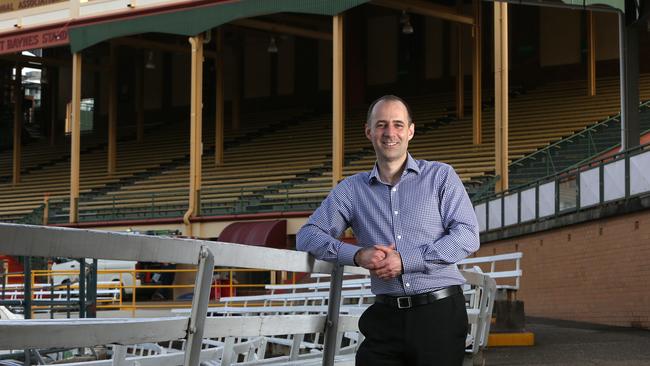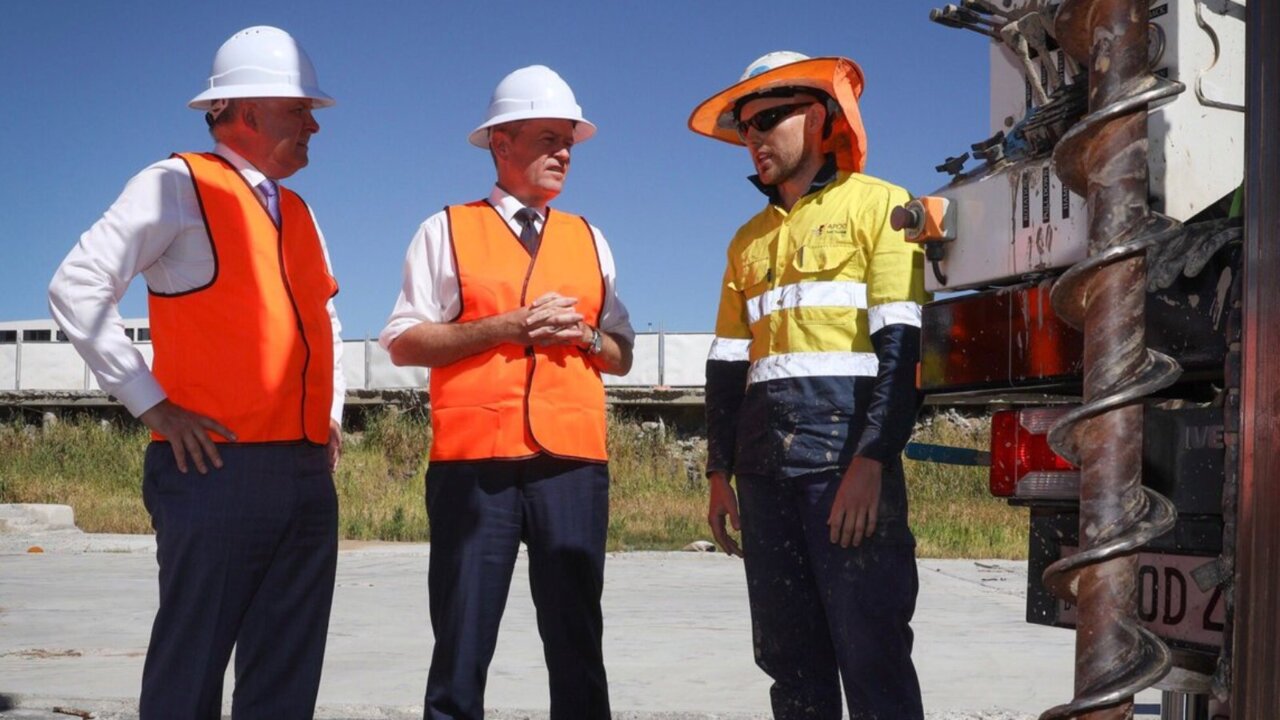$20b Brisbane project boom to create thousands of jobs over 10 years
Thousands of workers will be required as more than $20 billion in Brisbane infrastructure projects line up over the next decade. Find out where the opportunities lie, and what pitfalls to consider.

QBM
Don't miss out on the headlines from QBM. Followed categories will be added to My News.
It’s a stinking hot day and Sean Shen is in the airconditioned cabin of his concrete truck, with the mixer slowly rotating as he supplies building sites around Brisbane.
Shen’s been doing the job for about four years – previously he was involved in computer networking – and enjoys this role more. That’s even with days starting at 6am and sometimes going for 10 hours. “It’s less stress,” he says.
He thinks it’s an opportune time too to work in the sector with various projects going up. “It will be a good time to do the job,” he says.
World-class seafood market tipped for Queen’s Wharf development
Queen’s Wharf carpenters to earn $300,000 a year
Tenders called for key components of Brisbane’s Queen’s Wharf development
Hunt begins for thousands of workers need to build Queen’s Wharf
Shorten slams PM over Cross River Rail funding snub
Cross River Rail: Albert St underground station becomes PDA
Shen’s type of role is among thousands of jobs that will be required as more than $20 billion in work from more than a dozen Brisbane infrastructure projects comes on stream over the next decade.
Proponents will need staff working in roles from pouring concrete to arranging finance, to specialists who know the ins and outs of installing airconditioning.
But while there’s a raft of work and dollars to win, there’s also an air of caution too.
Subcontractors are being urged to check agreements so they are protected. Workers are being urged to watch out for sham contracting agreements, while head contractors need to avoid the elevated risk of budget blowouts.
HOW MANY ARE NEEDED
The total number of jobs required is hard to calculate as proponents provide differing measurements about employment numbers, making it hard to compare what’s needed. Some refer to total job numbers and include people indirectly employed – others describe annualised workforce needs in the construction phase. It can lead to surprising numbers: Brisbane City Council estimates 4300 people have worked so far on the $650 million Kingsford Smith Drive revamp, while the Queensland Government-backed $5.4 billion Cross River Rail project is tipped to need 7700 jobs.
Cross River Rail, whose construction deadline is aimed at 2023, thinks about 1500 jobs will be required annually, directly and indirectly, as it creates a 10.2km rail line through Brisbane.
A spokeswoman says almost 450 new apprenticeships and traineeships will be needed, in areas like welding or specialist work with escalators.
At the RNA, a partially complete 15-year redevelopment of the Brisbane Showgrounds will require an estimated 2000 jobs.
RNA chief executive Brendan Christou says big projects use people from landscape design architects to financial experts who arrange funding.

WHERE WORKERS WILL COME FROM
But will all these projects just use fly-in, fly-out workers instead of Brisbane operators?
Cross River Rail says the state’s procurement policy requires, where possible, use of local contractors in Queensland Government projects worth more than $100 million.
Over at the residential-retail West Village project in inner Brisbane’s West End, the Japanese developer Sekisui House says 610 of 760 direct jobs needed in the construction phase should be local.
Euan Morton, of Synergies Economic Consulting and a specialist in infrastructure developments, says aspects of projects could require specialised labour, who might have to be brought in. That could be some people working on tunnel boring machines, for example. “However, a lot of construction work is generic,” he says. A concreter on a residential tower should be able to also work on a casino, he says.
While the construction labour workforce is highly mobile and can be sourced nationally, Morton adds some proponents prefer a local builder “because it knows the local environment better and is likely to recruit better and provide a lower risk”.
The projects come as Brisbane’s apartment boom slows due to oversupply concerns. But Morton thinks other industries will need workers, such as if public-infrastructure ramps up ahead of the 2020 state election. “We are unlikely to see a slump in demand for construction workers, nor are we likely to see major constraints,” he predicts.
WHY PROJECTS BUST BUDGETS
Projects also need to be closely watched to avoid cost blowouts, as has occurred with the Kingsford Smith Drive revamp with the deadline extended by a year due to problematic ground conditions.
While the project initially cost $650 million, Brisbane City Council says contractor Lendlease is on the hook because the contract was sealed on a fixed price. Lendlease declined to confirm numbers but last November copped a $350 million hit due largely to a “small number of projects”.
That’s not a freak outcome - a 2014 paper by Oxford University academic Bent Flyvbjerg said nine out of 10 megaprojects suffer from cost overruns. “Overruns of up to 50 per cent in real terms are common, over 50 per cent not uncommon,” he wrote.
David Porter, managing director of Endeavour Programme, which is developing technology to improve project delivery, says risks were associated with executing on time and budget. “Big projects are difficult things to do,” he says, explaining that it boils down to three issues.

The first is complexity – as projects get more complex it becomes increasingly hard to grasp how different parts interrelate and affect one another.
Then there is uncertainty – potentially events that are hard to predict over the long-term, such as exactly when a massive hailstorm will hit.
The last issue is human limitations, including people being biased optimistically about projects.
Developers of Queensland projects try to protect against blowouts.
The RNA’s Christou says businesses are alive to the expensive problem of altering plans after a fixed-price contract is signed.
“Once you’ve locked in pricing, you don’t want to have variations,” he says.
TOUGH MARGINS?
The range of projects does not mean it is all cream for everyone. One senior industry source says proponents could currently drive far harder bargains with contractors because of the muted residential pipeline for work.
Then there’s concern about the type of jobs.
Michael Clifford, assistant general secretary of the Queensland Council of Unions, welcomes the infrastructure projects but adds “we want to make sure it creates secure employment”. He flags the possibility of sham contracting – where workers that should be hired as employees are listed as contractors to avoid obligations such as workers’ compensation.
But proponents give reassurances of guarding against such problems. Real estate giant Dexus, proposing a $1.35 billion revamp of the Eagle St waterfront precinct, for instance says its policies require suppliers to comply with ethical work practices. “Any concerns that contractors were not meeting their obligations would be investigated,” Dexus says.
A Brisbane City Council spokesman says its $944 million Brisbane Metro public transport system would require adherence to the Building Code, which covers sham contracting. Council would monitor compliance, he says.
For others down the chain, John Goddard of Subbies United said subcontractors should have a construction lawyer read through contracts, “especially on a big project, where they tie you up in knots”.
Subcontractors should also watch retention payments – money only paid on completion, he says. He gives the example of a painter having their final compensation delayed if another subcontractor’s job was badly done.



